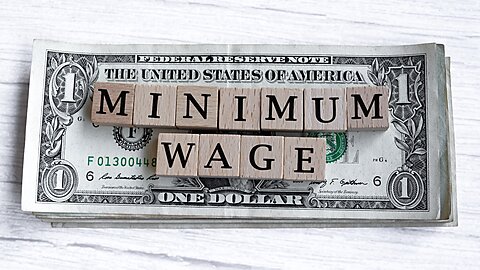Sophia Bagley and Ryan Bourne
This year kicks off with minimum wage hikes across 21 states. Economists have long documented that while minimum wage increases often boost wages for those who remain employed, there are no free lunches. Extensive research shows minimum wage increases to high levels tend to hurt new and low-skilled workers as businesses respond by cutting hours or hiring opportunities.
Moreover, newer research has found that businesses may use other margins of adjustment to cope with wage floors than layoffs or hour cuts. From reducing workplace perks and non-pay benefits to favoring seasoned employees over newbies, businesses are finding creative ways to soften the blow. These adjustments erode job quality and often shrink opportunities for the very workers minimum wage hikes aim to help.
Quantifying these hidden shifts is a nightmare. Most data doesn’t capture these subtle changes, meaning that the existing literature produces different results based on which groups are studied and how labor market health is factored in. Enter John Horton from NYU. His latest paper in the American Economic Review sheds light on minimum wage hikes through an innovative methodology, revealing that low-productivity workers might be hit harder by minimum wage laws than economists typically tend to conclude.
Horton ran a randomized control experiment on a large online labor platform where firms post jobs for tasks like data entry, graphic design, or programming. Workers bid for jobs by proposing hourly wages, with firms selecting these workers based on their applications.
The experiment assigned around 160,000 hourly job openings to four groups: a control group with no wage floor (a minimum wage of $0) and three treatment groups with minimum wages of $2, $3, or $4 per hour. Random assignment ensured comparable groups, while the platform’s software enforced minimum wages without notifying participants, thus maintaining the integrity of the randomized trial. Later, the platform imposed a market-wide minimum wage, this time announcing it beforehand. This second phase allowed Horton to study how firms and workers react when a wage floor is uniformly applied—much like in the real world.
His findings were quite striking:
Hired workers saw their wages rise.
Higher minimum wage rates led to fewer hires.
Hours worked dipped, even at the lowest wage increases.
Most of the hour cuts came from firms swapping out low-productivity workers for their more efficient counterparts, speeding up task completion.
Simply put, pricier labor means employers want less of it. Faced with higher hourly wage costs, they also leaned towards hiring more productive workers, which accounted for nearly half the hour reductions. For many low-skilled workers, a high minimum wage could thus mean being booted out of the job market entirely. Even if overall employment doesn’t drop when a wage floor is raised, those lowest-skilled may still face significant harm, getting edged out by more experienced employees.
Horton’s experiment stands out because, unlike traditional studies, he could track workers’ real-time productivity, looking at the distributional impact of the policy by worker skill level. His randomized research design also cuts through potential biases that often skew minimum wage research.
So, what’s the key takeaway? Horton’s findings present an important question: Have other researchers been underestimating how rising wage floors impact low-skilled workers? If his results echo across other labor markets, studies claiming no overall disemployment effects from minimum wages might be masking a harsh reality: hidden beneath the aggregate numbers, lower-skilled workers getting replaced by higher-skilled ones.
It’s another reminder that, even if they don’t cut jobs, many of the ways firms adjust to higher wage floors can still hurt the least experienced workers.

